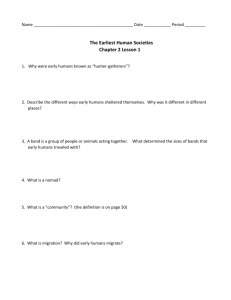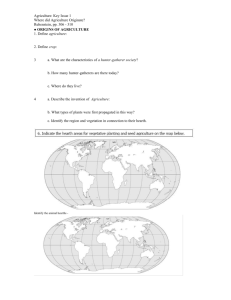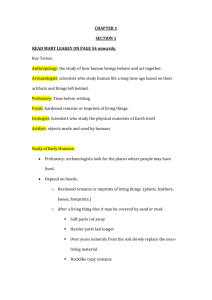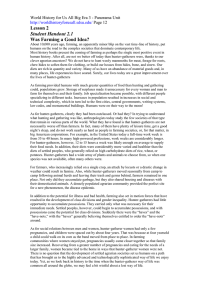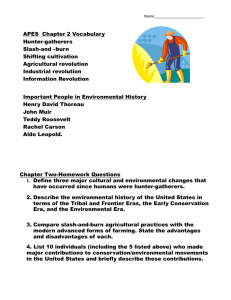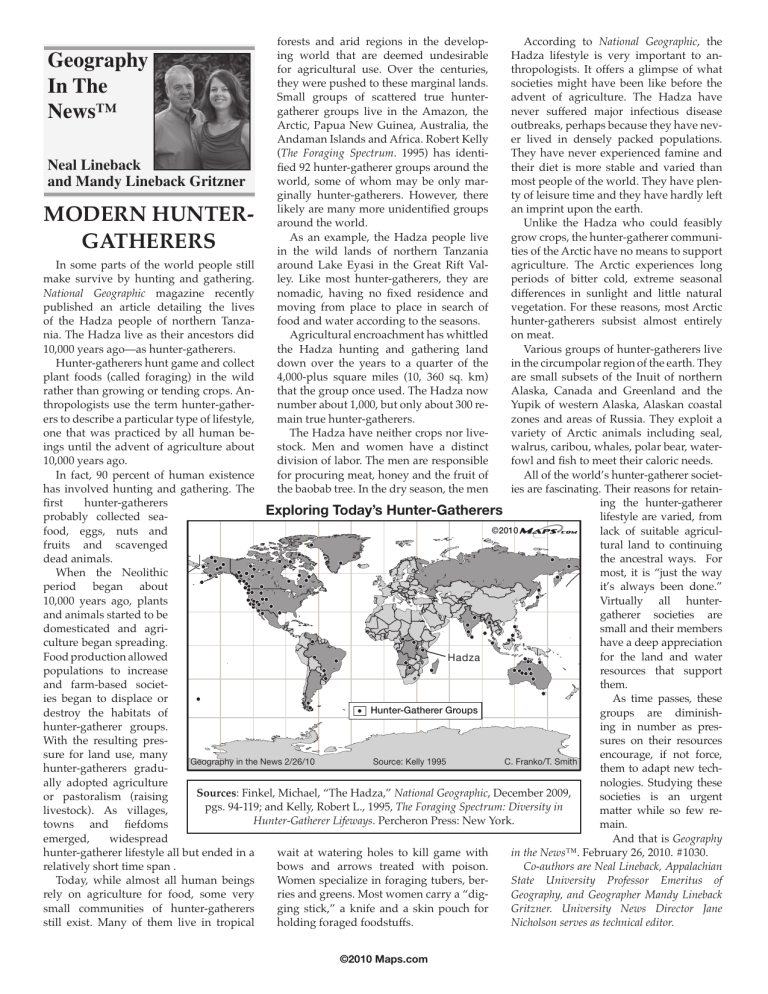
forests and arid regions in the developing world that are deemed undesirable for agricultural use. Over the centuries, they were pushed to these marginal lands. Small groups of scattered true huntergatherer groups live in the Amazon, the Arctic, Papua New Guinea, Australia, the Andaman Islands and Africa. Robert Kelly (The Foraging Spectrum. 1995) has identified 92 hunter-gatherer groups around the world, some of whom may be only marginally hunter-gatherers. However, there likely are many more unidentified groups around the world. As an example, the Hadza people live in the wild lands of northern Tanzania around Lake Eyasi in the Great Rift Valley. Like most hunter-gatherers, they are nomadic, having no fixed residence and moving from place to place in search of food and water according to the seasons. Agricultural encroachment has whittled the Hadza hunting and gathering land down over the years to a quarter of the 4,000-plus square miles (10, 360 sq. km) that the group once used. The Hadza now number about 1,000, but only about 300 remain true hunter-gatherers. The Hadza have neither crops nor livestock. Men and women have a distinct division of labor. The men are responsible for procuring meat, honey and the fruit of the baobab tree. In the dry season, the men According to National Geographic, the Hadza lifestyle is very important to anthropologists. It offers a glimpse of what societies might have been like before the advent of agriculture. The Hadza have never suffered major infectious disease outbreaks, perhaps because they have never lived in densely packed populations. They have never experienced famine and Neal Lineback their diet is more stable and varied than most people of the world. They have plenand Mandy Lineback Gritzner ty of leisure time and they have hardly left an imprint upon the earth. Unlike the Hadza who could feasibly grow crops, the hunter-gatherer communities of the Arctic have no means to support In some parts of the world people still agriculture. The Arctic experiences long make survive by hunting and gathering. periods of bitter cold, extreme seasonal National Geographic magazine recently differences in sunlight and little natural published an article detailing the lives vegetation. For these reasons, most Arctic of the Hadza people of northern Tanzahunter-gatherers subsist almost entirely nia. The Hadza live as their ancestors did on meat. 10,000 years ago—as hunter-gatherers. Various groups of hunter-gatherers live Hunter-gatherers hunt game and collect in the circumpolar region of the earth. They plant foods (called foraging) in the wild are small subsets of the Inuit of northern rather than growing or tending crops. AnAlaska, Canada and Greenland and the thropologists use the term hunter-gatherYupik of western Alaska, Alaskan coastal ers to describe a particular type of lifestyle, zones and areas of Russia. They exploit a one that was practiced by all human bevariety of Arctic animals including seal, ings until the advent of agriculture about walrus, caribou, whales, polar bear, water10,000 years ago. fowl and fish to meet their caloric needs. In fact, 90 percent of human existence All of the world’s hunter-gatherer societhas involved hunting and gathering. The ies are fascinating. Their reasons for retainfirst hunter-gatherers ing the hunter-gatherer Exploring Today’s Hunter-Gatherers probably collected sealifestyle are varied, from ©2010 food, eggs, nuts and lack of suitable agriculfruits and scavenged tural land to continuing dead animals. the ancestral ways. For When the Neolithic most, it is “just the way period began about it’s always been done.” 10,000 years ago, plants Virtually all hunterand animals started to be gatherer societies are domesticated and agrismall and their members culture began spreading. have a deep appreciation Food production allowed for the land and water Hadza populations to increase resources that support and farm-based societthem. ies began to displace or As time passes, these Hunter-Gatherer Groups destroy the habitats of groups are diminishhunter-gatherer groups. ing in number as presWith the resulting pressures on their resources sure for land use, many encourage, if not force, Geography in the News 2/26/10 Source: Kelly 1995 C. Franko/T. Smith hunter-gatherers graduthem to adapt new techally adopted agriculture nologies. Studying these Sources: Finkel, Michael, “The Hadza,” National Geographic, December 2009, or pastoralism (raising societies is an urgent pgs. 94-119; and Kelly, Robert L., 1995, The Foraging Spectrum: Diversity in livestock). As villages, matter while so few reHunter-Gatherer Lifeways. Percheron Press: New York. towns and fiefdoms main. emerged, widespread And that is Geography hunter-gatherer lifestyle all but ended in a wait at watering holes to kill game with in the News™. February 26, 2010. #1030. relatively short time span . bows and arrows treated with poison. Co-authors are Neal Lineback, Appalachian Today, while almost all human beings Women specialize in foraging tubers, berState University Professor Emeritus of rely on agriculture for food, some very ries and greens. Most women carry a “digGeography, and Geographer Mandy Lineback small communities of hunter-gatherers ging stick,” a knife and a skin pouch for Gritzner. University News Director Jane still exist. Many of them live in tropical holding foraged foodstuffs. Nicholson serves as technical editor. Geography In The News™ MODERN HUNTERGATHERERS ©2010 Maps.com
